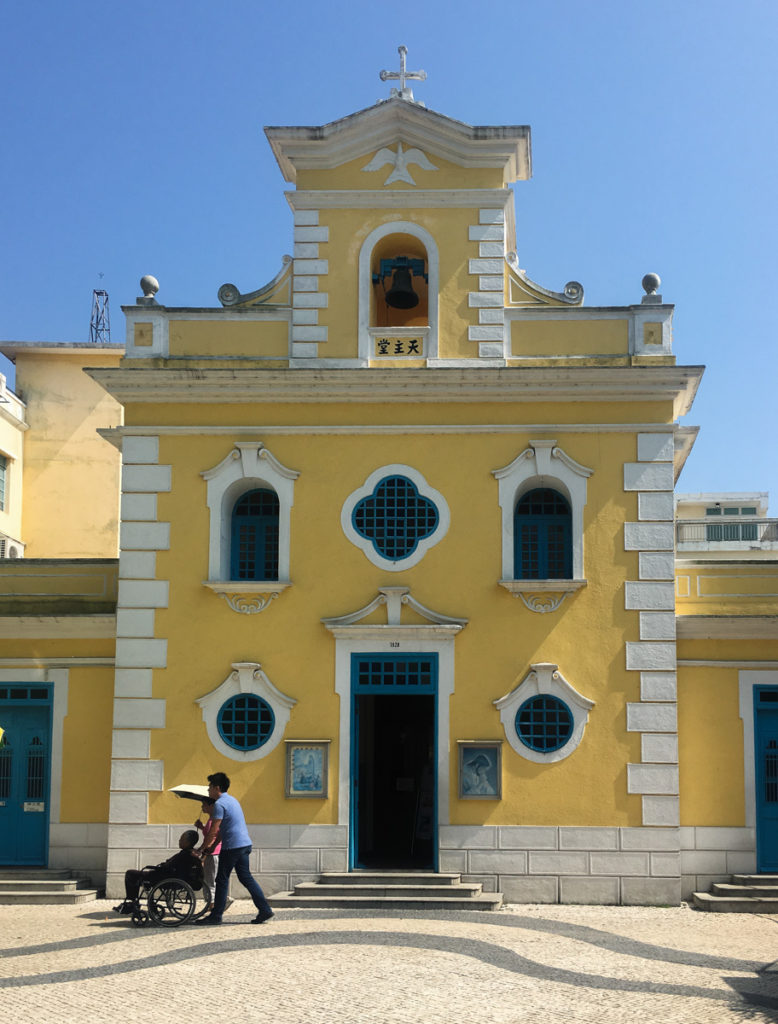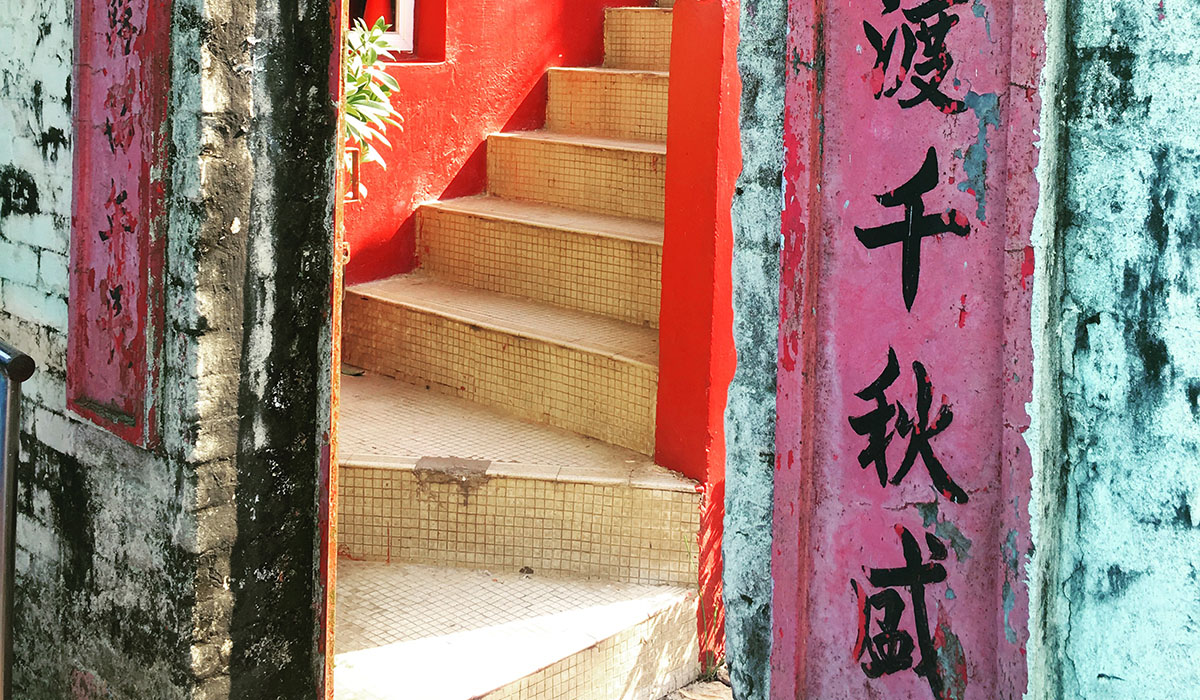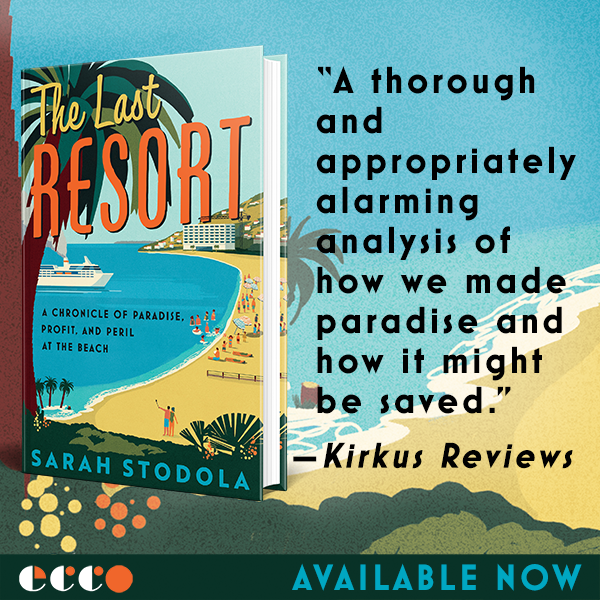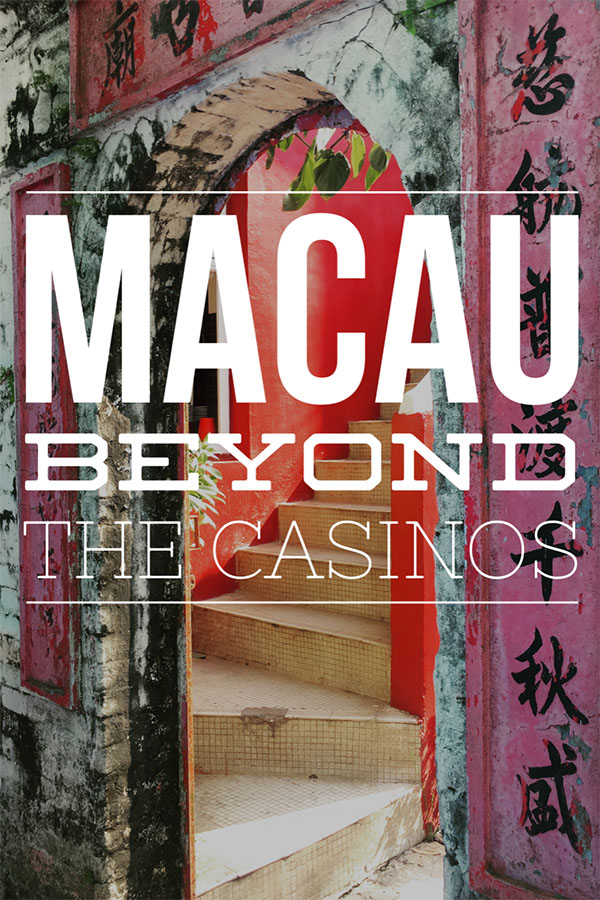Ask a resident of Macau where to buy the freshest egg tart or enjoy a phoenix egg roll, and you’ll likely get an answer you can’t plug into Google Maps. The response may begin with something along the lines of: “Turn left at the McDonald’s, walk a few blocks, make a right, maybe another block or two, look for that church, St. Dominic’s, there’s a street off that,” which might leave any visitor at a loss.
That’s because the Macanese don’t follow official street names, which are written in both Chinese and Portuguese on beautiful tiles positioned at eye-level on the corners of many buildings. They’re like traffic lights everyone ignores.
Instead, I learned from the Macau native guiding me through the city on a recent trip, the Macanese are landmark-driven, with more to choose from almost daily as their home solidifies its spot as the world’s preeminent gambling mecca. To name a couple: the Wynn Palace Cotai, opened in August 2016 on the famed Cotai Strip with 1,706 rooms and an eight-acre performance lake; also on the Cotai Strip, the 2,200-room Galaxy Macau Resort, built in 2011 with surely enough wattage to blind incoming flights. These massive hotels are sprouting up everywhere to accommodate the more than one million Chinese tourists who visit every month.
“Macau’s gotten too big, too fast,” said Terence Kong, a lifelong Macau resident who was outside exercising with his wife one morning in Guia Hill, a serene, leafy municipal park where locals, not tourists or gamers (they’re not called “gamblers” in Macau), come to stretch, jog, walk the dog and breathe in a magnificent view featuring the Grand Lisboa Hotel, already iconic at only a decade old and visible from almost every vantage point in Macau. “We lost our calm city,” he said.
But did they? New Macau is indeed growing big and fast, but that doesn’t mean Old Macau has disappeared. Macau may be nicknamed “the Las Vegas of China,” but this moniker isn’t entirely fair. In fact, the Macanese have proven adept at preserving the past, taking great pride in their heritage in a place that is home to more than 20 UNESCO World Heritage Sites, many dating from the Portuguese’ arrival in the 16th century.
Old Macau is alive and well, and it’s a foodie paradise that can be easily enjoyed on foot. In quiet corners away from the glitzy resorts and nonstop roadside construction, walking Macau feels like walking neighborhoods in Paris or London. Vendors still unpretentiously do what they’ve been doing for generations: cooking up fresh Macanese goodies, a fusion of Portuguese and Chinese cuisine that’s been a mainstay of the street scene here since centuries before Steve Wynn showed up.
Macau was given back to China in 1999, but the city still considers Portugal a friend. What makes Macau worth a 15-hour flight is its mix of time, traditions, and trends, with a distinct coalescence of history and culture that shows no signs of being overshadowed by a 21st century casino scene.
Once you’ve crossed the Pacific and want to power-through that jet lag, the Lazarus District makes for a great place to caffeinate and get an introduction to Old Macau. Named after one of the region’s oldest churches, St. Lazarus, the neighborhood originally arose from a need to quarantine lepers inland and away from the daily grind of port life.
The church itself sits on Rua de Joao de Almeida—if you want to navigate using street names. Walking there involves strolls along cobblestone streets and past courtyards, gardens, and colorful old homes and businesses. There’s an active art, vintage shopping, dining, and coffee scene, and it’s genuinely quiet and not crowded. You don’t really hear traffic and you can’t see a single casino, not even the oddball-shaped Grand Lisboa.
A two-minute walk from St. Lazarus, I drank some of the best coffee of my life (sorry, Cuba) at Single Origin, a tiny, fragrant two-story coffeehouse about the size of a McMansion walk-in closet. I regret buying only one bag of the shop’s Macau-roasted beans to bring home. Single Origin also serves a limited selection of Western-style sandwiches and its famous Earl Grey Chiffon cake.
If you can find Single Origin, then you can find Albergue 1601, a Portuguese restaurant tucked towards the back of a low-lit cobblestone courtyard in a lemon-yellow art deco building. Macau claims to have more Michelin-star restaurants per square mile outside Paris, and while many of these restaurants are found in the newly built hotels, this is one of those opportunities for delicious, old-school food away from the casino scene. In an upstairs dining room reminiscent of a Havana smoking lounge, you can sip sangria and eat African chicken or anything from the sea that can be grilled. Finish the meal with a classic Macanese dessert called serradurra cake (Portuguese for “sawdust”), made with layers of chilled whipped cream and finely-crumbled cookie. Serradura cakes are sold in many bakeries and eateries around Macau, including Taipa Village, but Albergue 1601 has the old-world ambiance for savoring an old-world dessert.



A 10-minute walk from Albergue 1601 down some more narrow streets, Senado Square is the heart of Macau’s historic center. Expect crowds of tourists, there for the famous Ruins of St. Paul’s as well as St. Dominic’s, another lovely 16th-century church. It gets more interesting in the little side streets such as Rua da Palha, where you’ll find McPherson’s Sweet Shoppe. Here, you can try ice cream flavors such as black garlic, green tea tiramisu, and the local hit, durian king, inspired by the fruit widely consumed throughout Southeast Asia.
Rua da Palha eventually becomes Travessa Da Se, a street whose name loosely means “crossing by the church.” Here you can eat just about anything very cheaply and all day long until the vendors shoo you away sometime late in the evening. Stalls sell all different types of jerky, classic Macanese egg tart, puffed tofu balls, phoenix egg rolls, fish balls, seaweed wraps, curry, and the go-to Macanese souvenir—almond cookies, which transport easily in luggage bound for long flights.
To observe almond cookies being made, head to Rua de Felicidade, or “the Street of Happiness,” another old, narrow, casino-free nook lined with bright red doors and the city’s former Red Light District. Instead of ladies of the night, you’ll find strong-armed women donning aprons and kneading dough. Whatever you didn’t eat at Travessa Da Se you can likely find here. I lost count of the eateries along this short road, but there’s dine-in as well as take-away, or just eat it hot and fresh after a vendor hands it to you. Restaurants had names like Naughty Nuri’s, Sai Nam, Dragon Portuguese Cuisine, and the famous and fancy Fat Siu Lau.
Along Rua de Felicidade and its neighboring streets, you’re reminded that people actually live in Macau. Doorways are adorned with small shrines, usually one for the gods on Earth by the ground and another for the gods above at eye-level. Each shrine contains three incense sticks that are replaced every morning and night to ask for blessings for a home or business. Small oranges placed by the incense sticks symbolize gold and luck.
Almond cookies and finger food abound on Rua do Cunha, another narrow pedestrian street in Taipa Village that is perhaps the queen of the “snack streets.” To get there you’ll need to take a taxi across one of the two bridges that connects Macau to Cotai and crosses the Maliuzhou Waterway, which flows out to the South China Sea.
Cunha is busy and tourists come here, too, but it’s worth it for all the eye candy; Cunha is color and noise and smells in motion, buzzing all day and into the night, when all the advertisements and street signs—big and small—glow. I had an outstanding dinner at a sushi restaurant called Sam Kiu on a side street off Cunha (I couldn’t find a street sign), where I tried barracuda sushi for the first time. The last time I saw a barracuda was from a small boat off the coast of Exuma in the Bahamas. I had no idea then how tender and tasty they were.



It’s always a good idea to chase a fine meal with dessert and a little walking. For this, head to Coloane, another delightful, walkable neighborhood with colorful side streets that are fun to get lost in. Coloane faces the South China Sea and was a sea salt farm for mainland China before the Portuguese showed up. At its heart is the Chapel of St. Francis Xavier, which rests at the foot of another beautiful stone courtyard and is one of Macau’s newer churches, built in 1928 to commemorate a 1910 victory over pirates. Macau likes its vintage sunny-yellow buildings; this chapel is as yellow as a daffodil, with bright blue doors and trim whiter than mountaintop snow.
Nga Tim Café is an inexpensive restaurant with plastic tables and chairs and outdoor seating right by the chapel’s entrance. It’s a popular lunch spot, especially on a balmy day, and an easy venue to lose track of time. The menu is a mix of Macanese, Chinese, and Portuguese with seafood being the primary dishes served, but you can also find roasted pig, barbecued chicken, ox tripe with chick peas, and drink really fresh coconut water straight out of the coconut.
To digest all this delicious food and reflect on all that you’ve seen so far, approximately two miles directly across from the chapel and café is Hac Sa Beach, where the Macanese like to relax. On a sunny afternoon without an inch of shade, I sat there watching tanker ships in the distance, trying to imagine what 16th, 17th, or 18th century Portuguese ships looked like, and why 400 years later, this relationship between Macau and Portugal defies colonial precedent and remains so cherished, so free of bitterness despite efforts to convert locals to Christianity. I don’t have answers, but my hope is that no matter how many casinos Macau builds, it won’t forget how it got its start.
The author traveled to Macau as a guest of the Four Seasons Macau and Macao Government Tourist Office.







